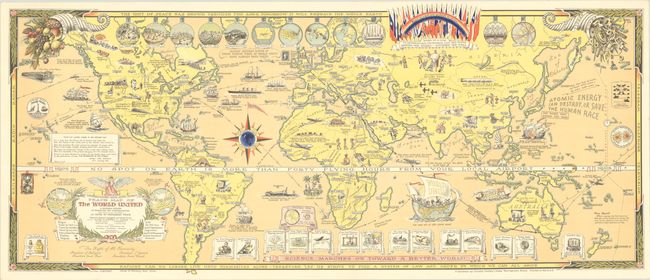Catalog Archive


Auction 186, Lot 43
Rare Pictorial Map Promoting Unity after World War II
"Peace Map of the World United - A Pictorial History of Transport and Communications from Jonah to the Jet Plane as Paths to Permanent Peace"

Subject: World
Period: 1945 (circa)
Publication:
Color: Printed Color
Size:
35.2 x 14.9 inches
89.4 x 37.8 cm
Download High Resolution Image
(or just click on image to launch the Zoom viewer)
(or just click on image to launch the Zoom viewer)